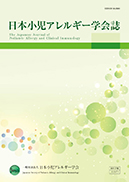Volume 36, Issue 1
Displaying 1-19 of 19 articles from this issue
- |<
- <
- 1
- >
- >|
-
2022Volume 36Issue 1 Pages 1-6
Published: March 20, 2022
Released on J-STAGE: March 18, 2022
Download PDF (535K) -
2022Volume 36Issue 1 Pages 7-13
Published: March 20, 2022
Released on J-STAGE: March 18, 2022
Download PDF (491K) -
2022Volume 36Issue 1 Pages 14-20
Published: March 20, 2022
Released on J-STAGE: March 18, 2022
Download PDF (990K)
-
2022Volume 36Issue 1 Pages 21-27
Published: March 20, 2022
Released on J-STAGE: March 18, 2022
Download PDF (594K) -
2022Volume 36Issue 1 Pages 28-34
Published: March 20, 2022
Released on J-STAGE: March 18, 2022
Download PDF (648K) -
2022Volume 36Issue 1 Pages 35-40
Published: March 20, 2022
Released on J-STAGE: March 18, 2022
Download PDF (584K)
-
2022Volume 36Issue 1 Pages 41-45
Published: March 20, 2022
Released on J-STAGE: March 18, 2022
Download PDF (389K) -
2022Volume 36Issue 1 Pages 46-52
Published: March 20, 2022
Released on J-STAGE: March 18, 2022
Download PDF (501K) -
2022Volume 36Issue 1 Pages 53-58
Published: March 20, 2022
Released on J-STAGE: March 18, 2022
Download PDF (514K) -
2022Volume 36Issue 1 Pages 59-64
Published: March 20, 2022
Released on J-STAGE: March 18, 2022
Download PDF (601K) -
2022Volume 36Issue 1 Pages 65-69
Published: March 20, 2022
Released on J-STAGE: March 18, 2022
Download PDF (306K) -
2022Volume 36Issue 1 Pages 70-73
Published: March 20, 2022
Released on J-STAGE: March 18, 2022
Download PDF (317K)
-
2022Volume 36Issue 1 Pages 74-80
Published: March 20, 2022
Released on J-STAGE: March 18, 2022
Download PDF (312K) -
2022Volume 36Issue 1 Pages 81-85
Published: March 20, 2022
Released on J-STAGE: March 18, 2022
Download PDF (376K) -
2022Volume 36Issue 1 Pages 86-92
Published: March 20, 2022
Released on J-STAGE: March 18, 2022
Download PDF (424K)
-
2022Volume 36Issue 1 Pages 93-100
Published: March 20, 2022
Released on J-STAGE: March 18, 2022
Download PDF (475K) -
2022Volume 36Issue 1 Pages 101-113
Published: March 20, 2022
Released on J-STAGE: March 18, 2022
Download PDF (956K) -
2022Volume 36Issue 1 Pages 114-118
Published: March 20, 2022
Released on J-STAGE: March 18, 2022
Download PDF (383K)
-
2022Volume 36Issue 1 Pages 119-126
Published: March 20, 2022
Released on J-STAGE: March 18, 2022
Download PDF (1139K)
- |<
- <
- 1
- >
- >|
